Ever dream of flying like a bird? Kevin and I recently had the ultimate falconry experience — flying with falcons in California and seeing them up close with Total Raptor Experience. This once-in-a-lifetime opportunity takes place along the coastal bluffs of La Jolla, Calif., overlooking the Pacific Ocean. I mean, can the setting be any more picturesque?

Follow our journey as we visit this real-life falconry school just outside San Diego. In fact, it’s the only place in the United States that offers a falconry experience like this. We joined in their falconry class to learn about the environmental importance of these birds as well as soar with them in flight. And in case you’re wondering, flying is Kevin’s top choice for his superpower (even though he has a crippling fear of heights). Clearly, he’s a glutton for pain.
A Falconry Experience: What To Expect At Falconry School
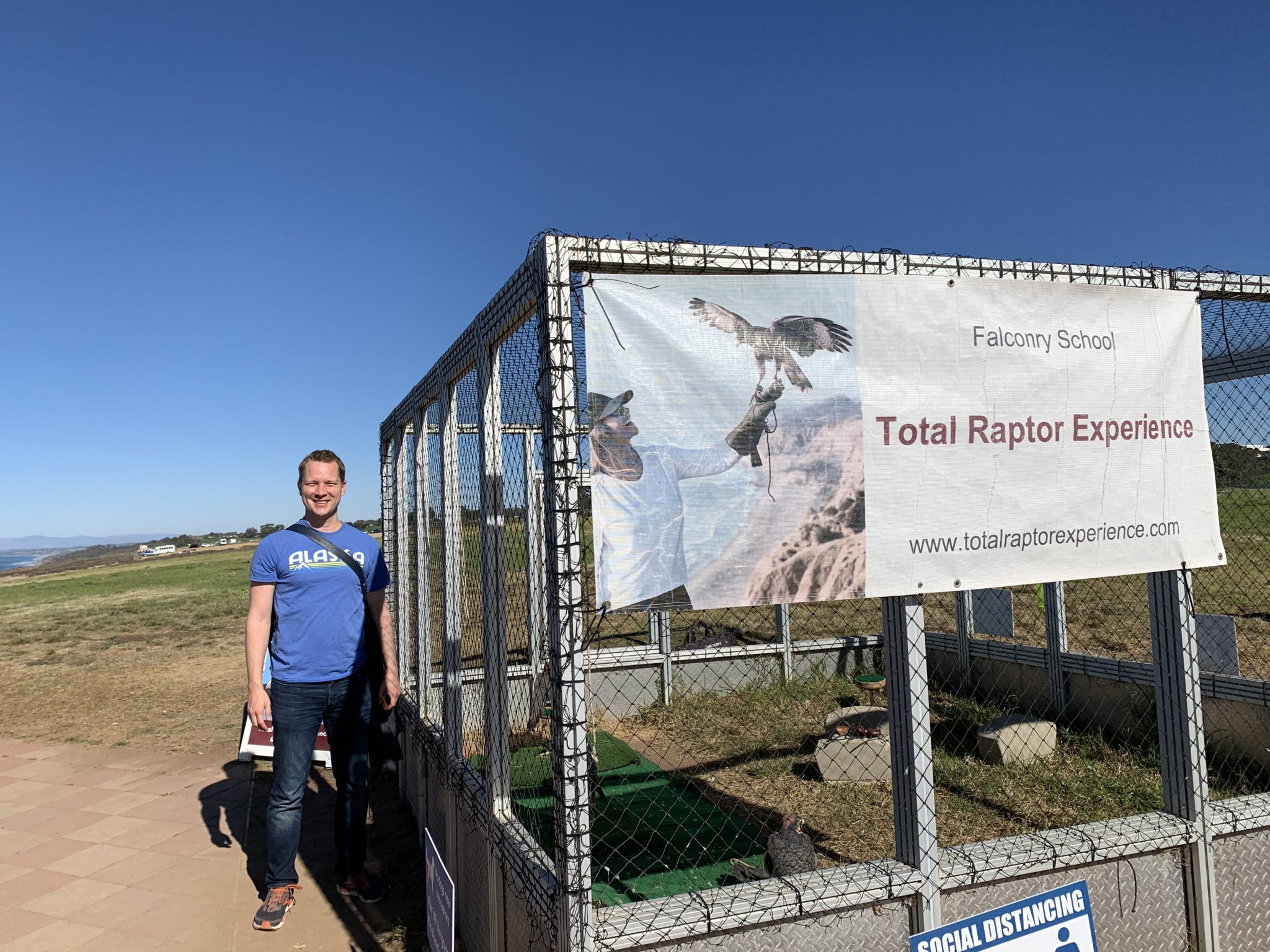
Meeting at Torrey Pines Gliderport, where the Falcons are kept for the Falconry experience.
If there is one thing we love, it’s learning about animals and seeing their power up close. Last year, I even rented a car to make the treacherous drive from Dubai to Abu Dhabi to visit the premier falcon hospital in the world. And hey, if I got in an accident along the way, I figured this falcon hospital is probably better than many of the hospitals I’ve been to. I guess they get some great care since a top falcon can cost up to $60,000.
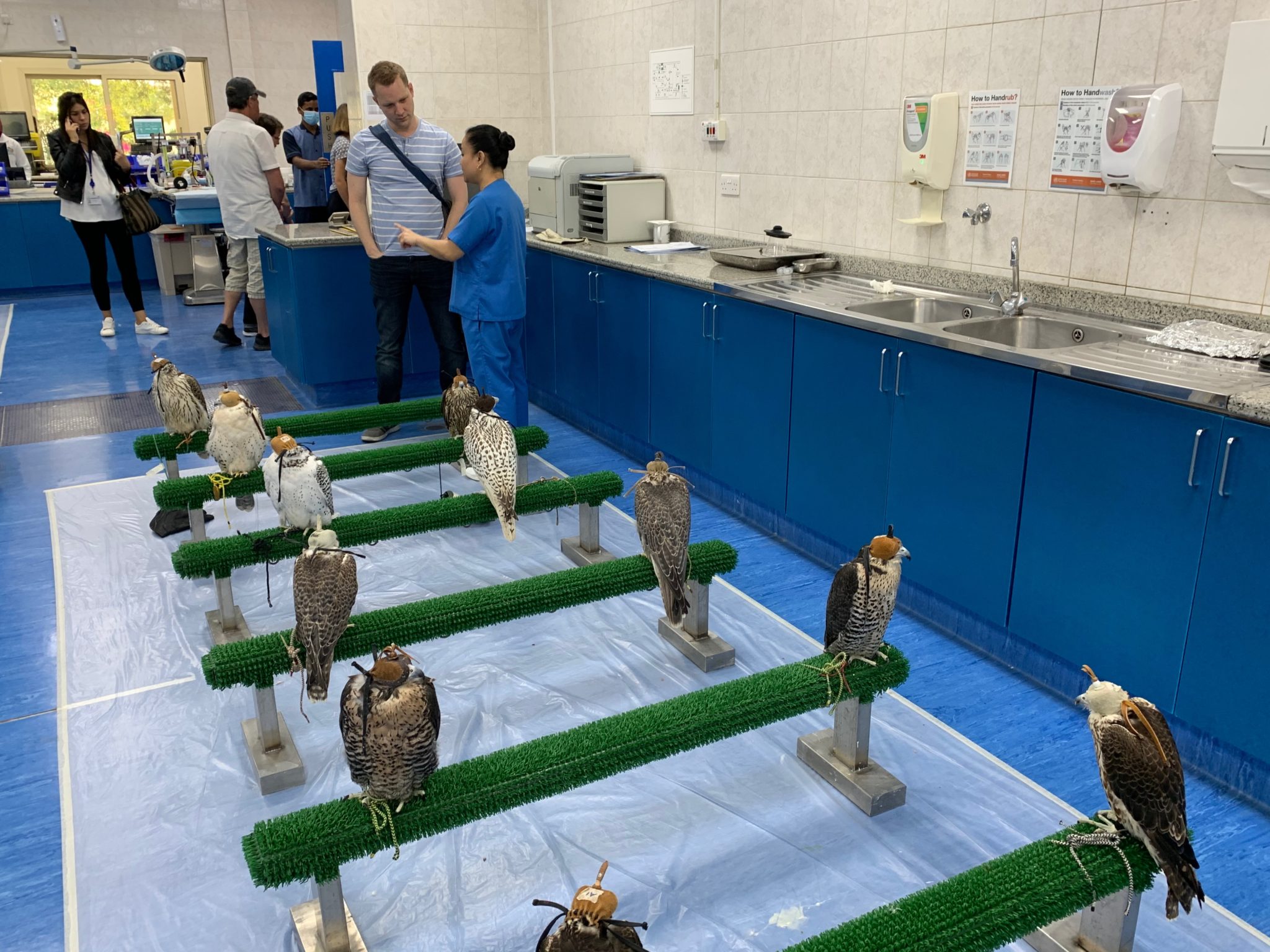
Treatment room at Abu Dhabi Falcon Hospital. These are some well cared for birds!
After literally being cooped up all week — and cursing the latest coronavirus shut downs — Kevin and I were ready to enjoy some time outside in the sun and do something unique in San Diego. And trust us, it doesn’t get much more unique than interacting with falcons. We met up with our teachers Antonella and Dave. Together, they formed Total Raptor Experience 4 years ago as a way to share their love and knowledge of these incredible birds.
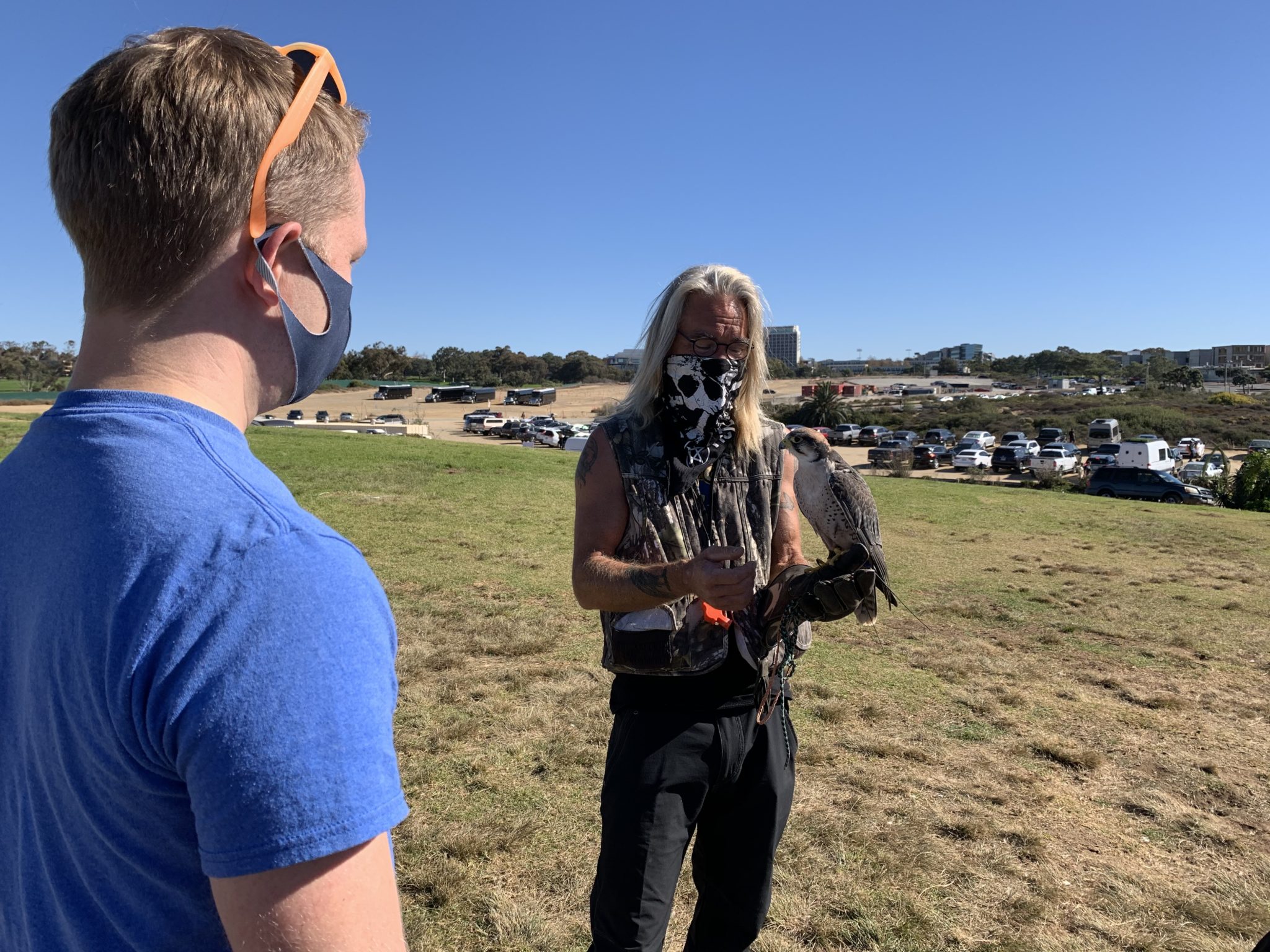
Kevin watches as Dave preps the first Falcon.
Dave has flown most of his life, starting at the age of 12. But it was a trip to Nepal that changed it all. It’s here that he learned the rare art of flying with falcons, studying under Scott Mason who pioneered “Parahawking,” an activity that combines paragliding with falconry. Why falcons versus other birds? In short, they’re great flyers and play an important role in the environment. Falcons are a natural form of pest control, particularly in cities where you’ll find an abundance of mice, pigeons and other critters.

Airports are also another place using falcons as a way to control pesky birds that can cause issues with airlines (like we all learned about in 2009 when Captain “Sully” Sullenberger landed a plane in the Hudson after a flock of geese flew into the plane’s engine). But it was the last example of the power of falcons that caught our attention, given our love of wine. Falconry is gaining popularity among wine estates for a natural form of pest control. Who knew? Cheers to the falcons!

From here, Antonella helped us slip on the falconry gloves and demonstrated how to call and release their trained falcons. But first thing first — the falcon must secure its hunting territory. It’s a natural instinct for the birds to circle and and see what’s in the air above us. It looked completely clear to me, but Antonella spotted another bird in the distance. Clearly, she and the falcons have a trained eye (that and I need to wear my glasses!).

After the falcon swooped, swirled and did a few circles above us, it was ready to come down to us. Kevin and I held out our arms as Antonella placed pieces of raw meat on our gloves. It sort of felt like playing fetch with our dog Doug. Though, the falcons are much better at this game than our dog.

Falconry Feast: A Target Practice For The Birds

The next part of our falconry school included a demo on how falcons hunt. Traditional falconry involves having the human flush the bird and direct the falcon to it. Before shotguns, this was the way to hunt. For this demo, a decoy was used with feathers attached to it. What was our role? We acted as stationary trees — standing completely still as the falcons swept down between us, skimming and dive bombing at high speeds reaching over 100 miles per hour.
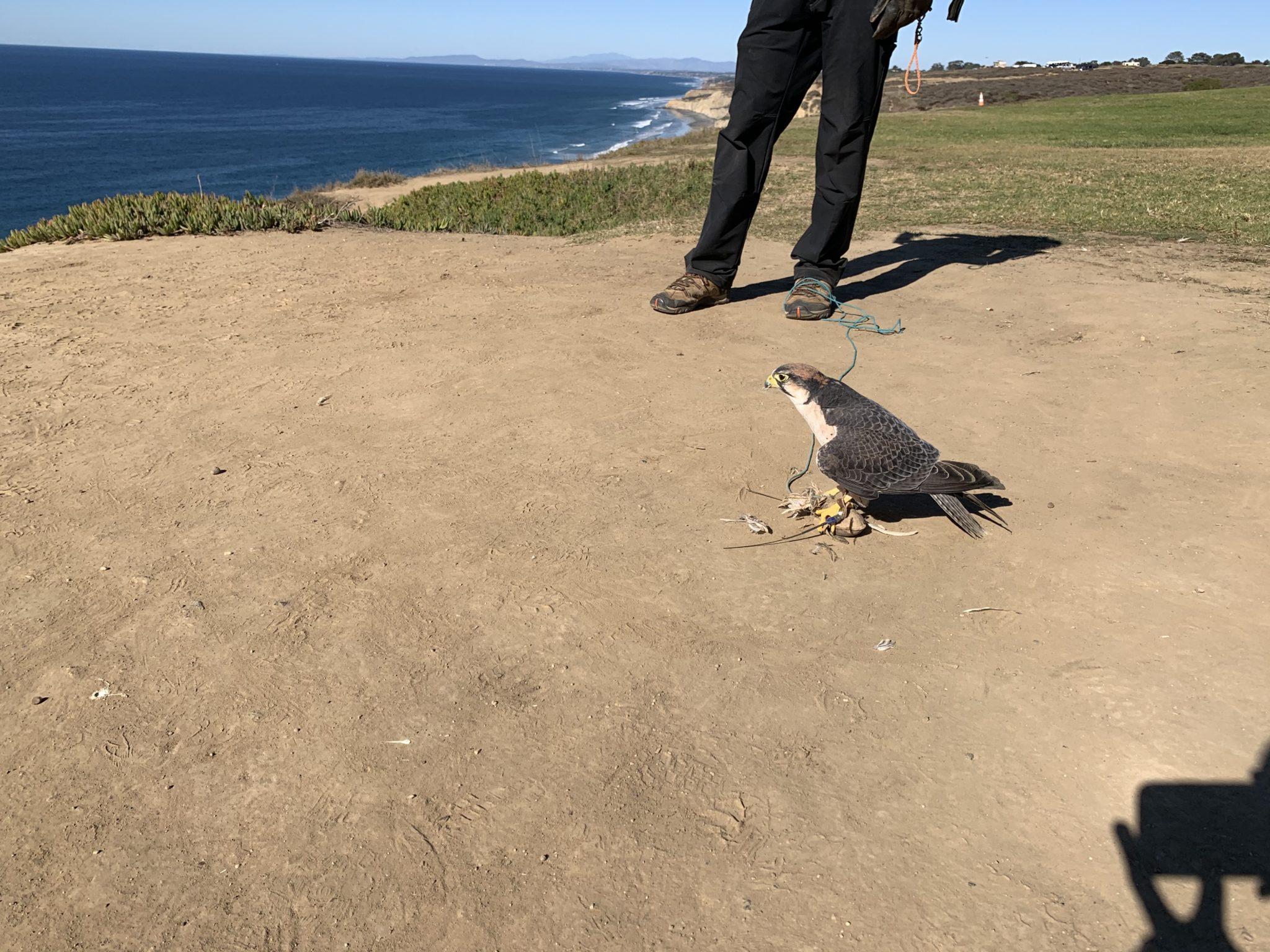
The falcon hits its mark, and it wasn’t us!
While owls, hawks and eagles all have great gripping strength, falcons have very little. Their talons and beaks aren’t as powerful and are not good self-defense mechanisms. It’s their fast speed and flying ability that gives them their superpower to literally knock out their prey. For this reason, all their hunting takes place in the air

Parahawking: It’s Time To Suit Up

It was at this point, that we moved into the next portion of the program — parahawking. This activity is based on weather conditions and most importantly, the proper wind direction. Fellow flyers were lined up watching as one of the paragliders decided to take the plunge off the cliff. Worst case scenario? He ends up floating down to the beach below. But the conditions seemed perfect as he soared along the cliffs.

And within minutes, the sky was full of paragliders. But we’d be the only ones today flying with falcons in the air. After a quick lesson on the do’s and don’t’s of flying, Dave was ready to take me out first. In short, I was told to lean forward and not to jump off the cliff. I can handle that!
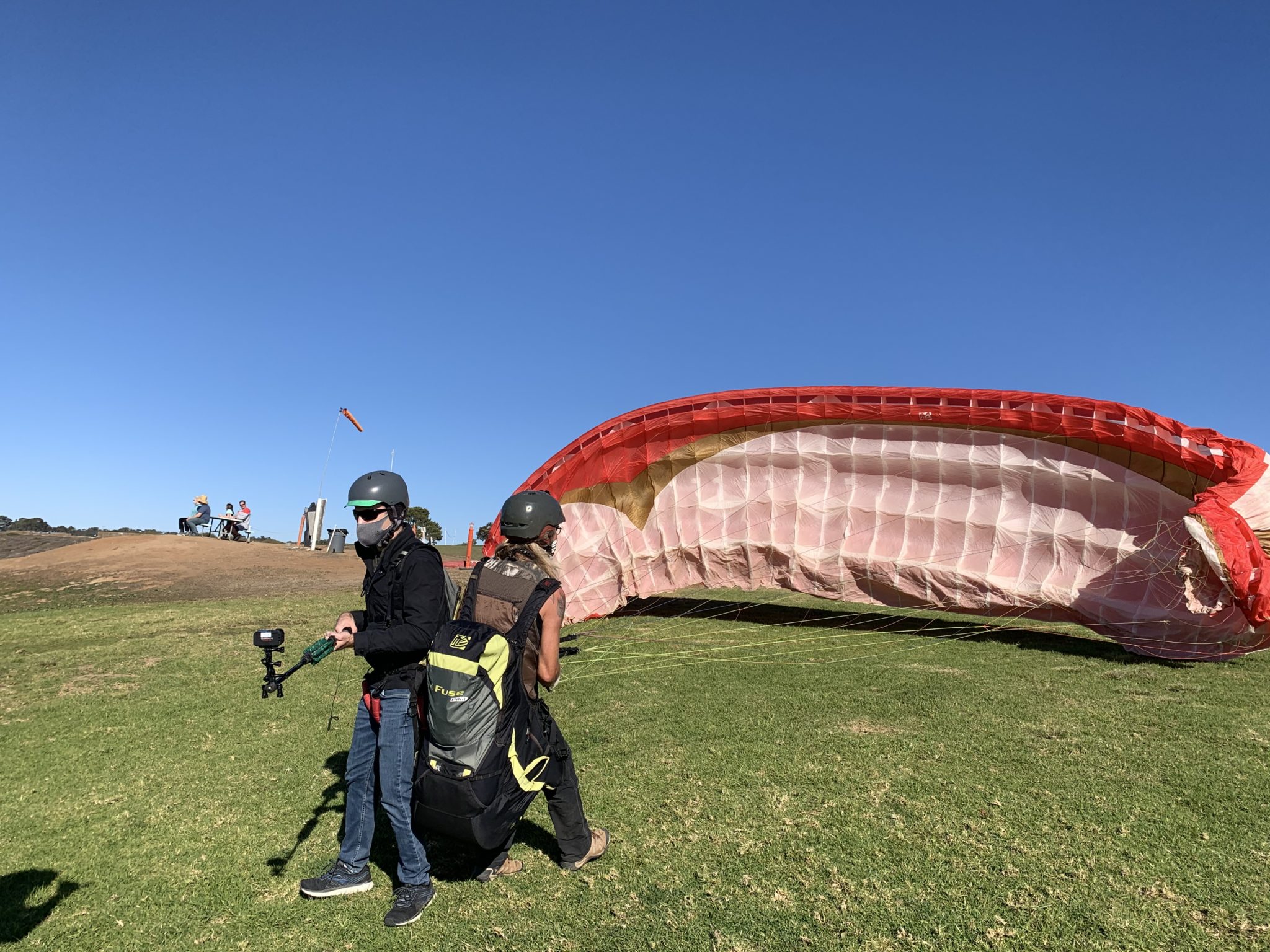
Getting ready with my camera in hand.
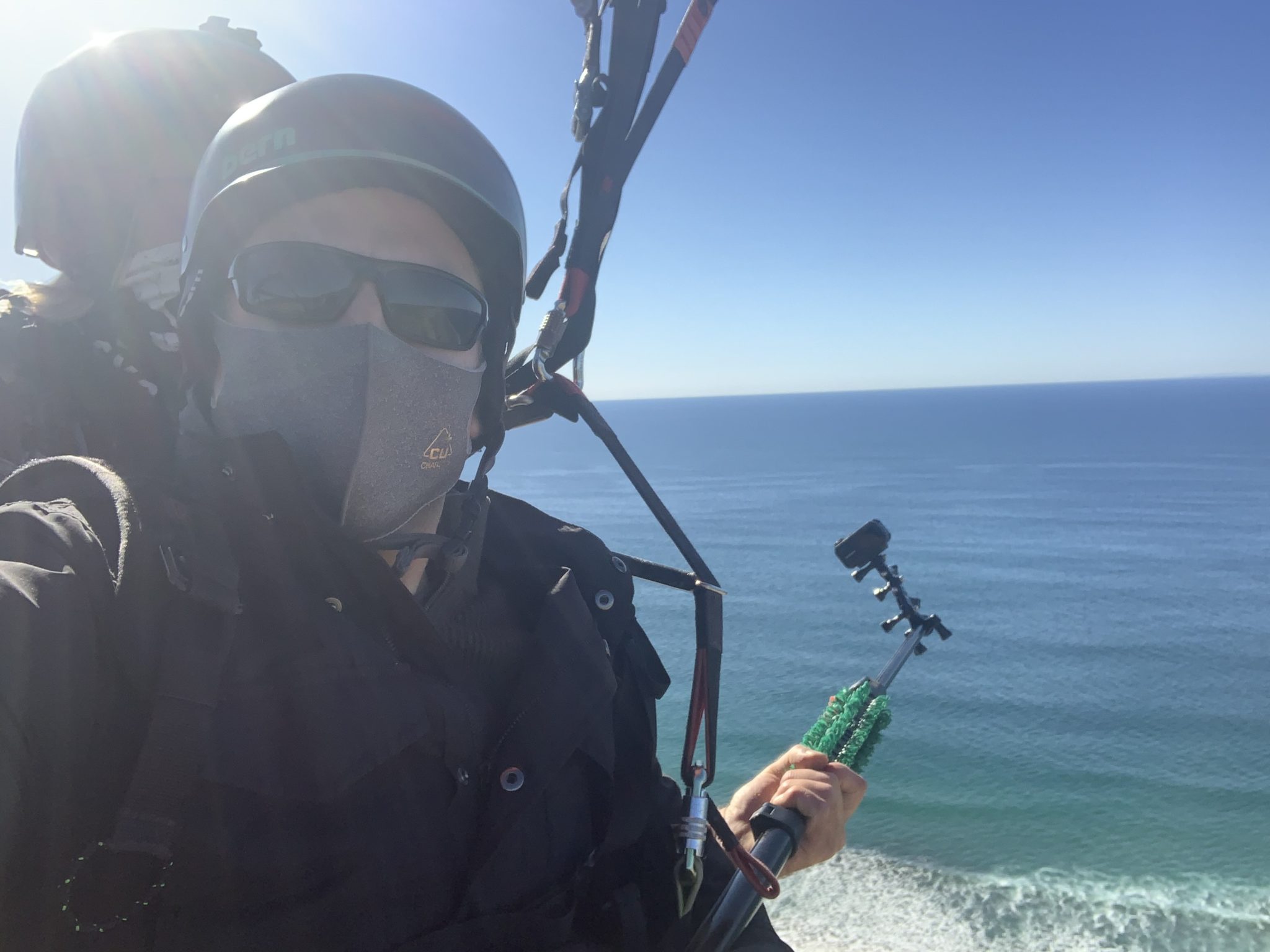
And I’m off!
In total, you’ll spend about 20-25 minutes soaring through the air with Bunco, one of their very first falcons. Bunco was trained to do this and he was a pro.

It was hard to believe we were up there for almost 30 minutes. The time flew by as I watched Bunco zip around us and dive bomb over the multi-million dollar homes lining the coast. We made our smooth landing and it was Kevin’s turn next. Let’s just say, Kevin was excited and scared all at once. The last time he went paragliding he completely stopped — as he and his instructor were about to run off the cliff. Dave and Antonella did a great job keeping him calm. In fact, their youngest flyer was 6 months old. Kevin thought, if a baby can do it, so can he. And clearly, he doesn’t get competitive at all (even with babies).
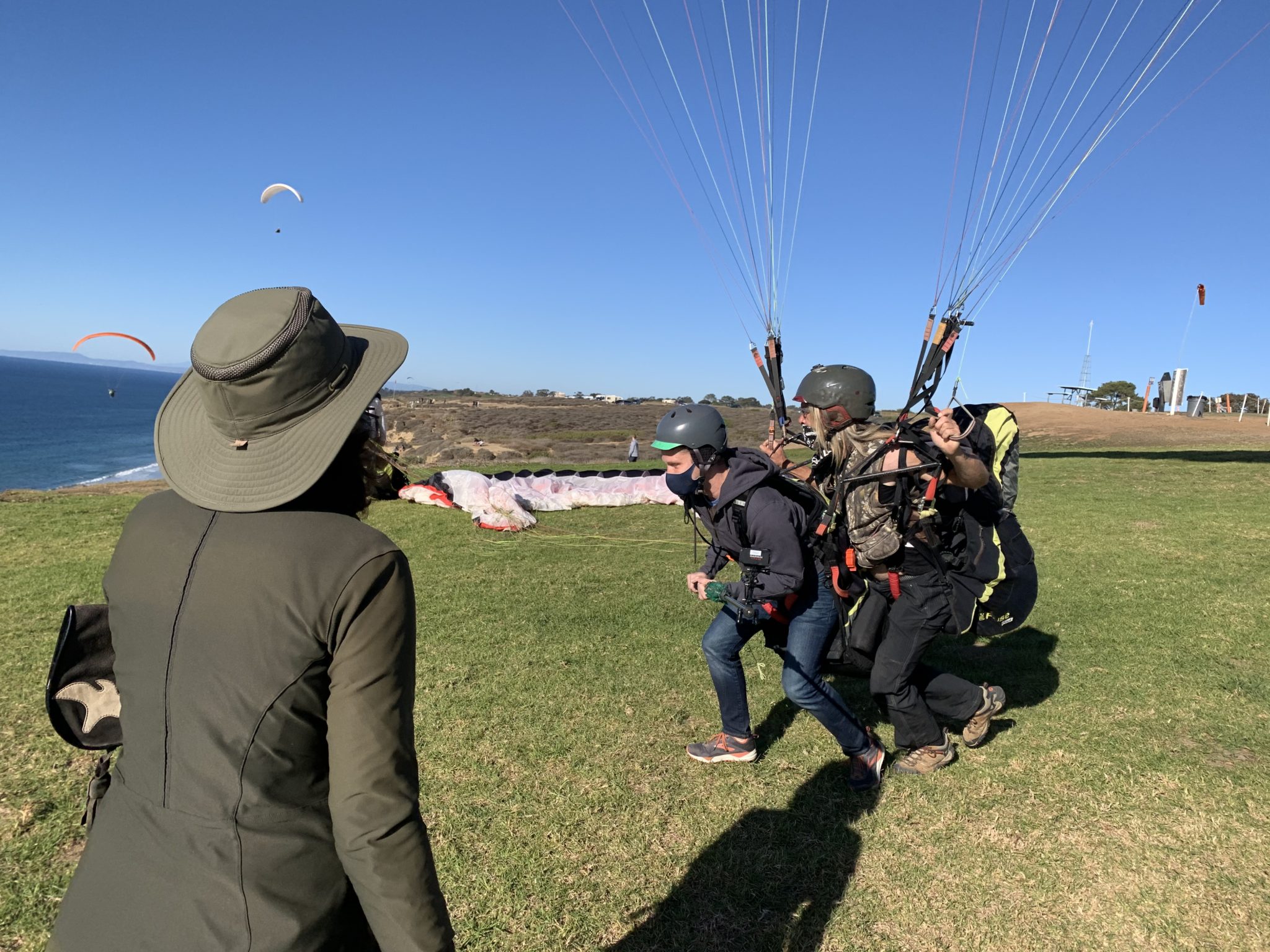
And Kevin is off!

Despite his initial fear, he was completely comfortable in the sky. And as usual, Kevin had plenty of questions that I’m sure kept Dave busy answering as they soared and fed Bunco the falcon.

Talk about an incredible day at the beach! We couldn’t believe how fast the day went by. We said our goodbyes and can clearly say that we learned more about falcons this afternoon than ever before. This is an activity we won’t ever forget — and clearly one of the most unique experiences you can find anywhere in the world.
THE LOW DOWN:
- Falconry experiences run Thursdays through Sundays at 11 AM or 1 PM and last about 1.5 hours.
- Each experience is structured as a group class with a maximum of 8 participants per group. For parties greater than 8 people, you can arrange a private experience.
- Two different locations are available either the Torrey Pines Gliderport on the cliffs of La Jolla (where we did this experience), or their main facility in Ramona.
- The falconry experience is $77 per person and can be booked directly on their website here.
- Parahawking is booked separately. This includes flight training and about 20-25 minutes of flying with the falcons.
- Parahawking costs $400 per participant, of which $175 goes to the Gliderport for the tandem paragliding flight, and $225 goes to Total Raptor Experience for a private falconry lesson and use of the bird.
- In addition, a GoPro camera can be rented from the shop located at the Gliderport. It costs $50 and you are able to take the SD card with you. It includes roughly 30 minutes of footage.
And there you have it! Looking for other ideas of things to do in San Diego? Check out our full coverage of San Diego must-see spots, including 8 fun date ideas for a weekend in San Diego. Love Mexican culture and food as much as we do? Check out our self-guided walking tour through San Diego’s Barrio Logan neighborhood. Or go further afield and see all our adventures in Los Angeles including the best places to get a close look at the Hollywood Sign.








No Comments, Be The First!